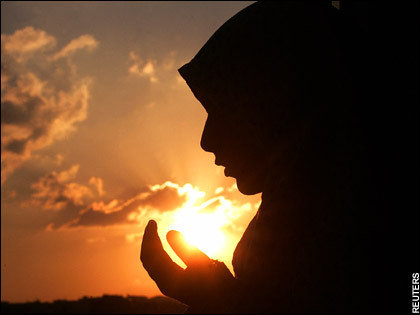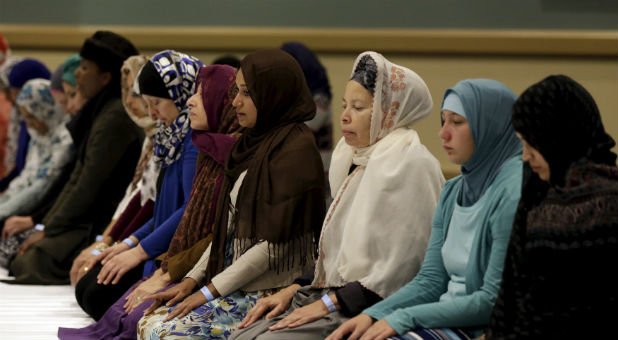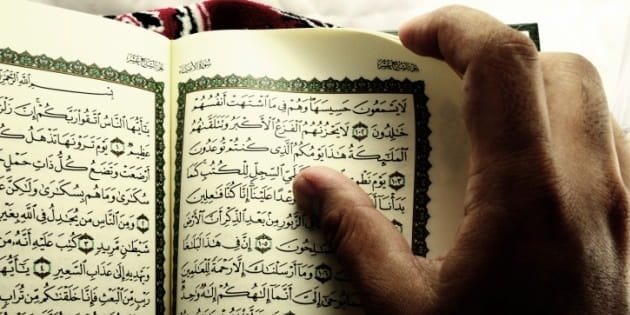by Nayyar Ahmed
In part 1 of my post ‘A women’s right to education in Islam’, emphasis was laid on the teachings of the holy Quran and the pristine practices of Prophet Muhammad, peace be upon him (pbuh) which made it abundantly clear that Islam is a religion of tolerance that grants educational and economical rights to women indiscriminately. Part 2 will focus more on the practical features of these teachings.
Ever since its inception, Islam has laid great emphasis on acquiring knowledge; religious as well as secular. Between the 8th and 13th century AD, Muslim women belonging to different cultures and corners of the world such as Baghdad (modern day Iraq), Al-Andalus (modern day Spain), the Ottoman Empire (modern day Turkey) and the central Asian states, played a central role as leaders, scientists, reformists and teachers of the Islamic civilization. Many of these historic names and their legacies have survived into the 21st century. However, in modern history the contribution of the Muslim world, not to mention Muslim women in the field of physical sciences, literature and of higher education has dwindled to its lowest ebb. An unbiased historical perspective on this matter will shed more light on the true teachings of Islam regarding women.
I would like to attract the reader’s attention upon the practical aspects of Islamic teachings found in the lives of Muslim women. Ayesha bint Abu Bakar, the wife of the Holy Founder of Islam (pbuh), was an excellent administrator. She became a scholar in Hadith, jurisprudence, an educator and orator2 so much so that Prophet Muhammad (pbuh) was reported to say “Take half of your religious knowledge from Ayesha”3 – in recognition of her learning and teaching skills. This makes Ayesha the first female teacher in Islamic history nearly 1400 years ago. Moreover, women at the time of Prophet Muhammad (pbuh) were given responsibilities of critical value such as tending the wounded, cooking food during war or guarding the belongings of soldiers, procuring medicine, delivering weapons, repairing equipment, transporting the martyrs, participation in defensive wars, encouraging combatants to go to the warfront, encouraging them at the scene of combat, and so on. In fact, the Quran further gives the example of Mother Mary, pre-dating Islam, that all believing men and women must follow in her footsteps in order to attain a high spiritual status (Quran 66:13) hence honoring chaste women. While a dark age of ignorance blanketed Europe, women in Islam enjoyed a status of equality and justice. This social status for women was unheard of at a time of blatant disregard of women’s rights. The Islamic justice system encouraged many women and men alike to enter the fold of Islam without compulsion through educational and enlightened reformation.
Building upon the practices of women in the early period of Islam, an intellectual empire was constructed in the centuries to follow which gave rise to the Islamic Golden Age. Throughout history, Muslim women have contributed to the field of sciences long before women in the West were permitted to see the inside of educational institutions. As professor Salim Al Hassani states in his book “…throughout Islamic history, the search for scientific knowledge was considered as an act of worship”4 and of course women rivalled men when it came to seeking secular knowledge. For example, the making of astrolabes, a branch of applied science, was practised by a woman, Al-Ijliyah bint Al-Ijli Al-Asturlabi (967 AD) in Aleppo (modern day Syria).4 Labana of Cordoba (10th century Spain) was a distinguished, recognised for her works in the field of mathematics. She could solve the most complex geometrical and algebraic problems known in her time.3
Furthermore, Rufayda bint Sa’ad, also known as Rufayda al-Aslamiyyah, considered the first nurse in Islamic history, lived at the time of the Prophet Muhammad (pbuh). She nursed the wounded and dying in the wars accompanying Prophet Muhammad (pbuh) in the battle of Badr on 13 March 624 AD.4 Rufayda was known to be kind and had good organizing skills. With her clinical skills, she trained other women to become nurses and work in the area of health care. She was also known to take particular care of children in need, orphans and the handicapped3. Two other prominent names that are worth mentioning are Al-Shifa bint Abduallah and Nusayba bint Harith al-Ansari who served as nurses during battles fought in the lifetime of Prophet Muhammad (pbuh). Such practices were not only accepted but encouraged by Prophet Muhammad (pbuh).
Historically, Muslim women have played a key role in promoting civilization and science. Many of them have built schools, mosques and hospitals. For example, Zubayda Bint Abu Jafar, the wife of Harun Al-Rashid, was a very wealthy and powerful woman. She undertook a colossal project in her lifetime to build service stations with water wells along the pilgrimage route from Baghdad to Mecca. Such projects required not only financial resources but a practical and sound knowledge of economics, architecture, geography, and cartography to achieve such engineering marvels. Dhayfa Khatun, who was the wife of Ayyubid ruler of Aleppo (modern day Syria) al-Zahir Ghazi, became Queen of Aleppo for 6 years after the demise of her husband. She is well known for her just rule and the removal of unfair taxes. She favoured the poor and scientists and founded many charities to support them. Her main field of interest was architecture. She had established two schools during her lifetime with campuses that had several buildings, residential halls for students and mosques. Another important example is a woman from Tunisia, Fatima Al-Fehri, who is known to have established the first and oldest University in the Islamic civilization called Qarawiyn. Students travelled there from all over the world (Europe and Far East) to study Islamic theology, astronomy, linguistics and sciences. Arabic numbers became known and used in Europe as part of their university syllabus. Many Muslim women have served as rulers and political leaders such as Sitt al-Mulk (Baghdad, Iraq), Shajarat al-Durr (Cairo, Egypt), Sultana Raziya (Delhi, India), Amina of Zaria (Zazzua, Nigeria), all hailing from different corners of the Islamic world4.
Similarly, during the Ottoman rule (modern day Turkey) in the 15th and 16th century, many texts present women as nurses and physicians/surgeons who worked shoulder to shoulder with men and performed some of the most complex surgeries in the field of gynaecology4. Also, the Ottoman government had setup important administrative centres known as harems that were exclusively run by women. Harem, a merit based program, was rewarded in a field of research in which a systematic investigation was performed5. Such a progressive society was unheard of during the dark ages of Europe.
Contrary to what Islamophobes believe, if Islamic civilization was oppressive and endogenously provoked violence against women, would it be possible for them to have achieved such glorified statuses? These examples, like many more, should be sufficient for the enlightened soul.
While Muslim women and the Islamic civilization in general suffered a fate of decline and decadence in the centuries to follow, Europeans with their crusades posed a unified front giving rise to a powerful West that emerged as a torch-bearer of scientific knowledge. Hence, in the light of the examples given above, it is not far-fetched to believe that Islamic civilization has served a role of an intermediary transferring scientific knowledge from the East to West making this a turning point for Europeans, especially for women in the West.
Earlier practices in Islam were a direct result of the Quran, and practices of Holy Prophet Muhammad (pbuh). These shining examples of women form a true inspiration for many even today, who broke all barriers of inequality and forever became part of a paradigm shift that was seen as a favour bestowed upon them from the Almighty. These examples, among many, are deeply embedded into Islamic history and bear no ambiguity in their message for future generations about the rights and liberties that Islam has to offer to women.
To conclude, the religion of Islam liberated women long before any secular government decided to expand the boundaries of impartiality beyond the realm of male dominance. Muslim women in the early pristine period not only taught about women rights, but also practised it without prejudice.
References
1. Sunan Ibn Maja, Volume 1, Book 1, Hadith 224.
2. Encycolpedia of Islam, Brill, vol. 1, pg 307.
3. Mu’jam al-Kabeer of Al-Tabarani.
4. Al-Hassani, Salim (chief editor), 1001 Inventions: Muslim Heritage in our World, Manchester: Foundation for Science, Technology and Civilisation, 2006.
5. Leslie P. Peirce, The Imperial Harem: Women and Sovereignty in the Ottoman Empire (Studies in Middle Eastern History), Oxford University Press, 1993.


